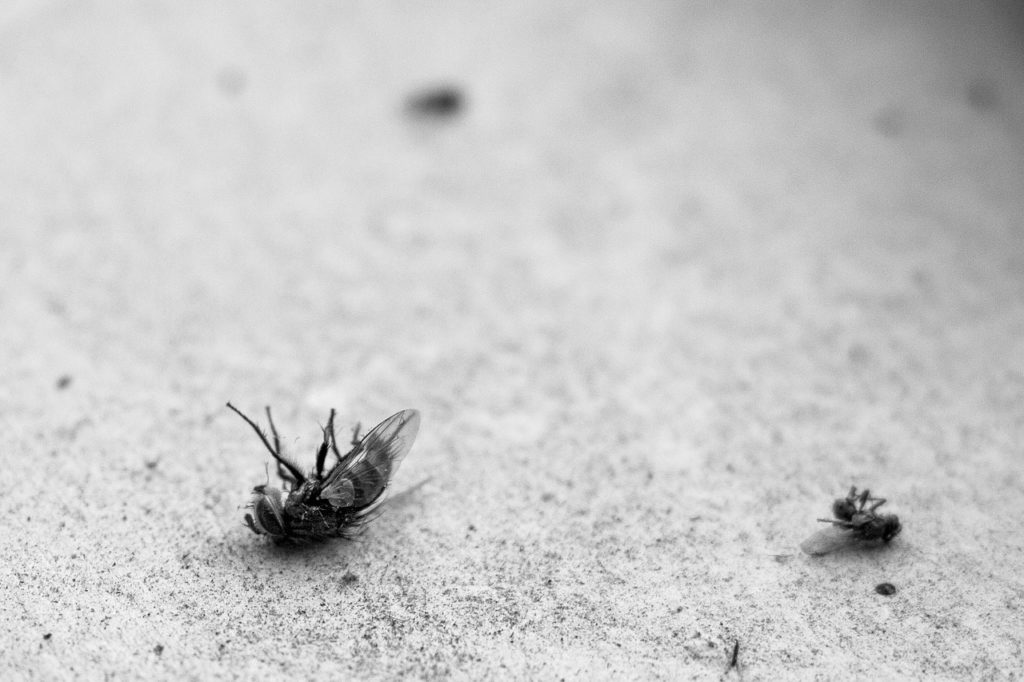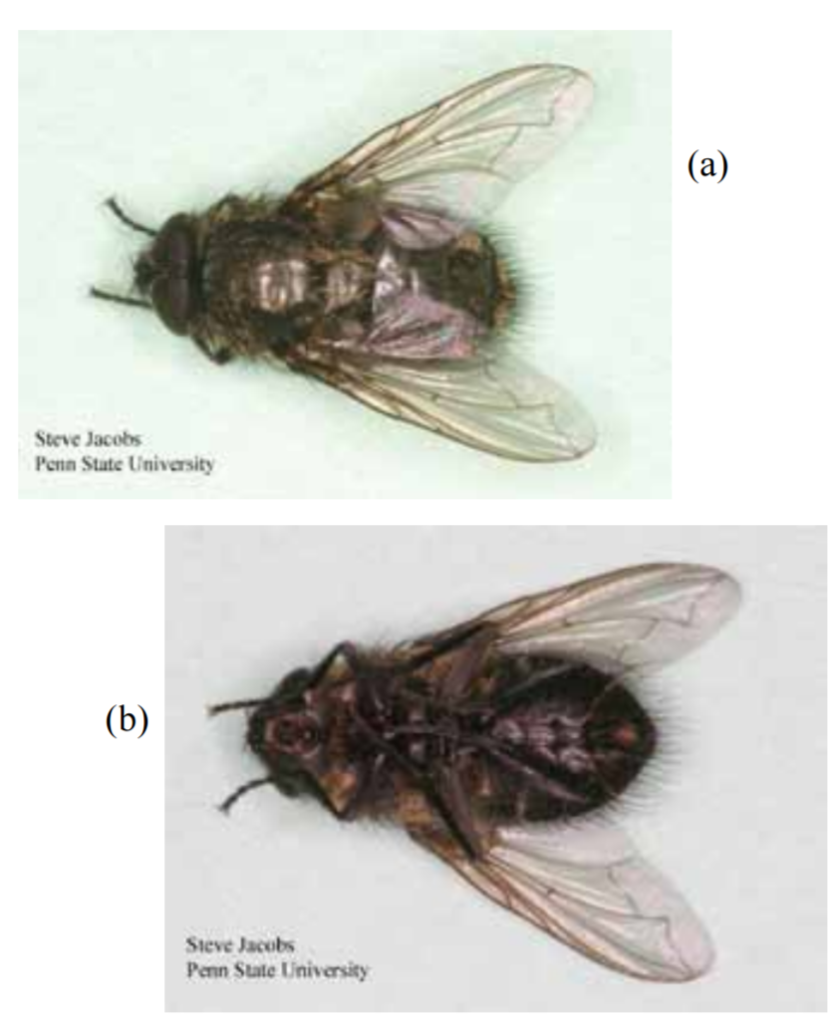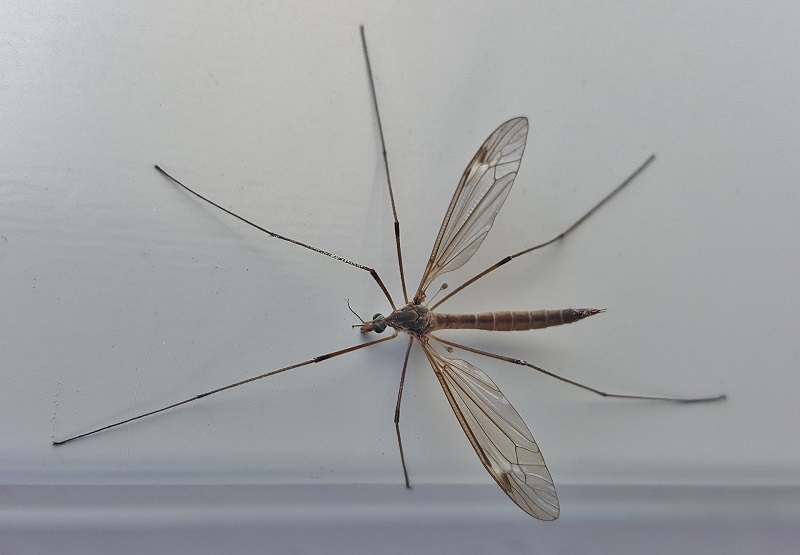Flies can be serious pests that not only drive you crazy but can also spread disease and make your home a breeding ground for bacteria. With over 100,000 known species of flies knowing how to combat them and what is most effective for termination depends greatly on the type of fly and the area the flies are in. Which means that understanding the life cycle and lifespan of flies is crucial to combating them and getting rid of them. Different types of flies have different lifespans.

Most Effective Ways of Getting Rid Of Flies
1. Seal Your Home: The reality is that flies multiply quickly and in very large numbers so the most effective way of combating a fly problem is to figure out where they are coming from and where they are reproducing. Doors and windows are your most common points of entry. Keeping doors closed in the summer is crucial to keeping flies out. Many people have found that having an effective fly trap hidden near your door is a great way to quickly trap flies before they have time to reproduce and contaminate your home. There are dozens of highly effective subtle fly traps that work well and can be hidden or camouflage in your home.
Windows are often the biggest culprit for penetration because broken or missing screens can be accessed at anytime without you knowing. This allows flies to find food and a warm safe places to lay eggs and infest your home.
Prevention Tips:
A. Check all of your doors leading outside and pay special attention to how well your door is sealed. If you can see light under or on the side of your door it means flies can get into your home easily. Not only will changing your seals remove the ability for flies to enter your home when your door is closed but it will increase your homes efficiency.
B. Inspect all of your windows to make sure they have a screen and that the screen is in good shape without holes or tears. Missing screens should be replaced, and holes or tears can be patched with a simple patch kit. This is one of our favorites:
2. Clean Trouble Areas:
Flies are attracted to food, so keeping your kitchen clean and removing access to food is essential. Dishes in the sink or spills on the counter act like a homing beacon to flies. Keeping just those two areas clean will work wonders in preventing flies in your home. Make sure that any food you leave on the counter is properly covered, think bread in the bread box and cakes and other deserts properly covered.
Organic Ways To Get Rid Of Flies
While chemicals tend to work the fastest. There are a number of natural ways to prevent and capture flies.
1. Organic Fly Trap:
Making an organic fly trap is a lot easier than you might think. One of our favorites utilizes only three things. A jar, sugar and a paper cone. fill the bottom of the jar with a little bit of water and sugar. Place the cone upside down in the bottle and leave a small hole in the point of cone. One of our favorite containers is a 2 liter bottle. Cut it in half and punch a small whole in the lid. The size of one fly. This will attract flies into the bottle where they eat and then cannot fly back out. Just toss the bottle when you are finished.

2. Apple Cider Vinegar Mason Jar Trap:
Another great organic trap is to take a mason jar and put some Apple Cider Vinegar in it. Punch a few holes in the top of the mason jar… keep in mind keep them small enough that flies can barely fit in. As they fly into the jar they won’t be able to fly back out.
3. Cloves:
For some odd reason flies hate cloves… they can’t stand the smell so they stay away. The only problem with this is method is that it really only works where the cloves are located, so it isn’t a great whole home solution. But give it a try, it is especially useful in the kitchen.
4. Lavender Oil:
Lavender Oil has a lot of therapeutic and medicinal uses. Not the least of which is it’s ability to be used as a natural fly repellent. The most effective way to do this is to get a small cup of lavender oil and dip a cloth in it. Close the container for 24 hours allowing the cloth to absorb the oil. Then open the container and place it in the area of your home where flies tend to gather the most. The natural aroma of the oil will repel flies and leave your home smelling fresh. Over time the rag and oil will lose its effectiveness due to exposure to air.
Most Common Flies:
Fruit Flies
Fruit flies are tiny, adults are only 1/8 inch long. While they can be year round pests they are most common in the late summer and early fall because they are attracted to fermenting fruit. Getting rid of fruit flies can be a task but we have an entire guide dedicated to them.
Black Flies
The Black Fly is known scientifically as the Simuliidae. With over 255 known species they can be found almost everywhere however they are very common in wet warm climates, black flies seek out standing water to lay anywhere between 200 to 800 eggs. With a life span as long as 85 days they can reproduce fast enough to cause outbreaks. Some states introduce safe natural products into streams and other bodies of water to eliminate breeding grounds. Black flies typically feed on hosts human or animal which is why they are one of the most annoying breed of flies. While bites are not dangerous reactions do vary from person to person. Getting rid of them completely is nearly impossible but outdoor activities can be enhanced by using repellents that contain DEET, this can be especially useful when hiking or camping.
Cluster Flies
Cluster Flies are named after the behavior they mimic most accurately. Clustering, like all flies, the best way to get rid of Cluster Flies is prevention. Cluster Flies congregate around cracks in walls, brick or other warm safe places. Females lay eggs in cracks in the grounds where their off spring feeds on earth worms. places where they can breed and lay eggs. They are almost always seen in groups and are commonly found gathering around windows because they are attracted to lights. Infestations typically occur in attics, false ceilings or even crawl spaces.
The best method for getting rid of them is chemically with CB 80 or PT 565. Additionally consider sticky traps or even a simple fly swatter. Cluster flies do not lay their eggs in human food thus are no threat to illness.
How to Identify a Cluster Fly?
Black and Silvery checkered body overlapped wings and typically larger and slower than the common house fly.

Crane Flies
Crane Flies are one of the most distinct but often miss understood species. They are commonly thought of as giant mosquitoes when in reality they are a species of fly. Recognized by their large legs skinny body and huge wings they are unmistakable when seen. 
Contrary to popular mythology they don’t prey on Mosquitos and they certainly do not bite. In fact they actually hold no danger to humans despite their intimidating looks. However they can be deadly to crops. They commonly eat roots of plants stunting their growth.
Getting rid of them is fairly easy there are multiple types of insecticides that are very effective for killing crane flies and their larva, Pyrethrin and Azadirachtin are some of the most commonly used chemical options.
